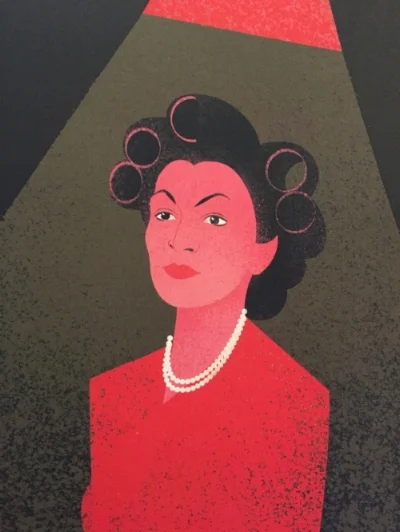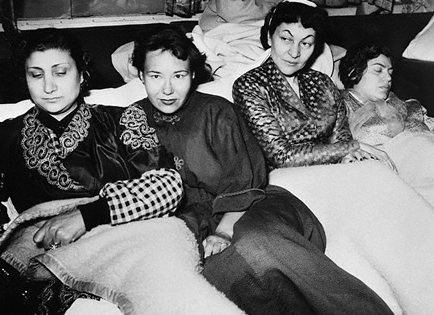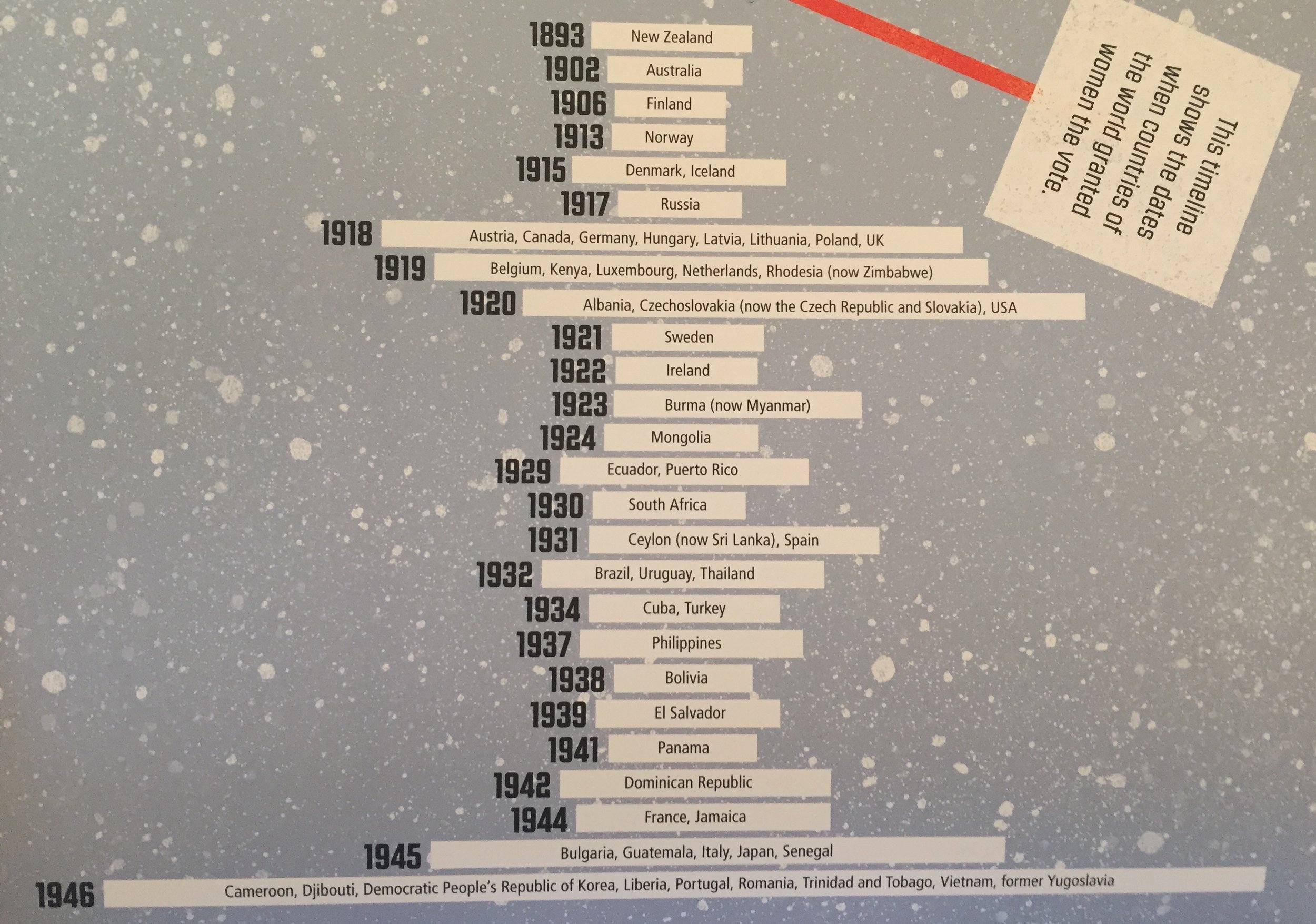Rebel Voices: The Rise of Votes for Women
Big Picture Ideas
One of the ways that ideas grow is when we can see how single ideas form part of a bigger picture. Rebel Voices: The Rise of Votes for Women by Eve Lloyd Knight and Louise Kay Stewart takes one idea—that of women's suffrage—and traces it across time and across the world.
The book is comprised of illustrated vignettes that are far too short to provide a comprehensive history of each country; but, this is not the point. What happens instead is perhaps more powerful. Yes, you revel in the celebrative spirit of each story, but you also find yourself peering into histories you may never have otherwise considered. Somewhere along the way, a question catches, an injustice sticks, and a desire to know more makes you hungry.
Big Picture Triumphs
One of the strengths of Rebel Voices is its ability to highlight the similarities of the general struggle through the stories of individuals at the forefront of each country's fight for suffrage.
Women's particular stories help breathe life into the history. Take, for example, the story of Matilde Hidalgo de Procel, Ecuador's first female doctor. She discovered that while no woman had ever voted in Ecuador, there were no laws stating that it was illegal for them to do so. In 1924, she demanded that her right to register for the upcoming elections be upheld and she became the first woman to vote in Ecuador. By 1929, as stated in Ecuador's Constitution, "all men and women older than 21 years of age and who know who to read and write" could vote. (Tip off: we'll get back to literacy tests, poll taxes, and racial inequalities in a bit.)
The problem, of course, with tying one country's movement with an individual is that it obscures the movement. The book manages to keep its footing, however. For one thing, by organizing the stories chronologically, we see how women's suffrage often occurred in tandem with large-scale events that resulted in a rupture of "business as usual:" wars, revolutions, migrations, even the advent of social media.
Furthermore, in its own small way, Rebel Voices becomes a primer for mass movement protest tactics. Through the stories, we pick up on some of the ways women advocated for the right to vote, such as hunger strikes, protests and marches, the organization of institutions, even the use of satire, and in some cases, violence.
Big Picture Challenges
One of the most compelling aspects of Rebel Voices is its inclusion of the contradictions that persisted in the fight for equality. Time and time again we are presented with the fact that for many countries, "women's suffrage" really meant white women's suffrage. The illustration for South Africa (below) portrays the stark difference:
The book features how even in the fight towards gender equality, the denial of rights persisted for certain groups of people, mainly along racial lines. It wasn't until 1962, for example, that Australian Aboriginal women and men gained the right to vote even though women's suffrage had technically been granted in 1902.
Similar patterns reveal themselves in various mutations throughout history, such as in Canada (1917 women's suffrage /1960 universal suffrage) and in the United States (1919/1964-5). The role of literacy tests and poll taxes played a significant role in denying voting rights to racial groups but they also functioned to protect class interests. The book touches on the association of authoritarian governments, colonial rule, and religious restrictions with the right to vote. To compare the different dates of suffrage within a country's history, view this chart (not a complete list).
Big Picture, Missing Picture
In the book's effort to celebrate the achievement of suffrage, we're inevitably left with an abbreviation of the full story; that is, the story of what follows after suffrage is left out. The struggle for female representation in elected positions was then, as today, a persistent obstacle (today global female representation in government is roughly 20%). The World Bank provides data for international comparison (hello, Rwanda, Bolivia, and Cuba at 61%, 53% and 49%, respectively).
In other countries, authoritarian governments rescinded the sorts of liberties that one would expect could come with the right to vote. Take Rebel Voices' feature of Egyptian Doria Shafik. We learn that, in addition to other efforts, her first hunger strike in 1954 helped to gain public attention to the cause, and that by 1956 (literate) women were granted the right to vote.
What we don't find out from the book, however, is that by 1957 under Egypt's growing authoritarian rule women's rights were severely limited. Considered a rabble-rouser, Shafik was placed under house arrest and her name was banned from public media. The photograph below shows Shafik in her second hunger strike (1957) against Nasser's regime. She was ostracized shortly after.
Big Picture Takeaways
All in all, Rebel Voices does an excellent job of introducing readers to a bigger—global—picture of women's rights. While at once expanding the stage of women's rights, it also presents the struggle in concentrated form. We can more clearly see the patterns of oppression and resistance that unfold through history while also joining in the triumphs against such forces.
A timeline of women's suffrage by date and country is provided at the end of the book.
Additional Resources
Rebel Voices has many avenues for continued discovery. Below are just a few of the resources that emerged from my own investigative carousing.
Rutger's University Teach a Girl to Lead project has compiled a wealth of materials on the topic of women's suffrage in the US. It includes links to primary sources and background information. It's also the source of this map that, for me, revised my understanding of US women's right to vote prior to the 19th Amendment.
Doria Shafik's daughters maintain her official website. Her story provides a glimpse into Egyptian feminist history.
The Black Sash was formed in South Africa in 1955 as a white women's resistance group against apartheid. After apartheid, it was reformed as a non-racial humanitarian organization. To see how they put their mission into action, visit Black Sash: Making Human Rights Real.
To see more of Eve Lloyd Wright's illustrations, visit her website.
*Frontispiece
Eve Lloyd Knight and Louise Kay Stewart's Rebel Voices: The Rise of Votes for Women (2018). London, UK: Wren & Rook.











